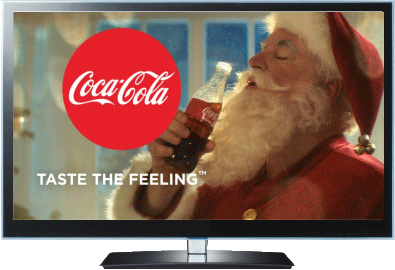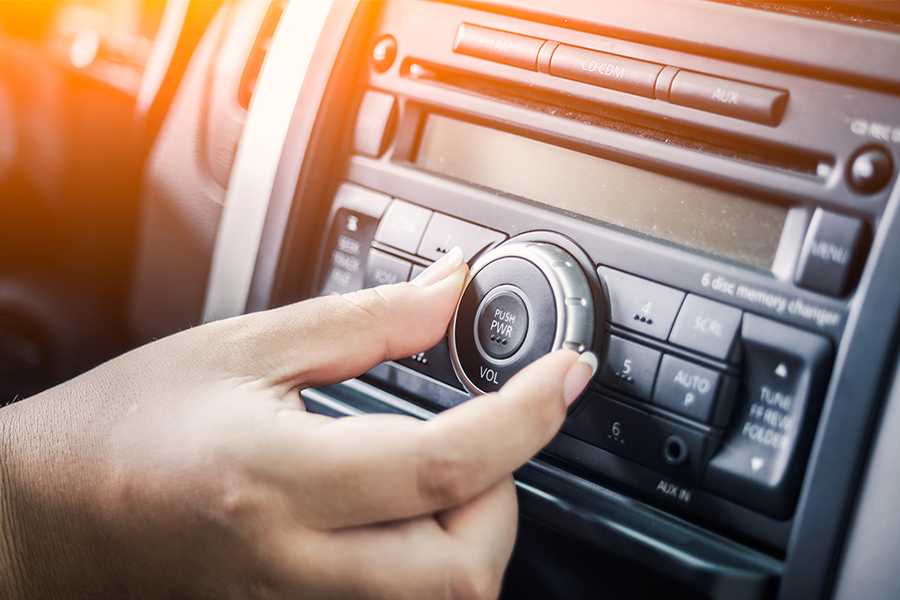
OOH advertising allows brands to create brand awareness, increase recall and increase sales growth. OOH advertising is a broad form of advertising that has low intrusiveness and offers advertisers a variety of options.
Digital out-of-home advertising has made it easier than ever for campaign performance to be tracked. DOOH now offers advertisers a more personalized experience. Advertisers may target specific demographics or make use of real-time data, such as weather and flight arrivals. This allows them to launch the most engaging campaigns possible. To measure the effectiveness and performance of their ads, marketers can use sensors and cameras provided by Quividi.
Bus advertisements are one the most obvious types of OOH. These ads are designed to follow people on their daily journeys. These ads can be strategically placed to reach a broad range of consumers and generate lots of buzz for the advertiser.

Another form of DOOH is the large format. This medium includes billboards, bus shelters, and city sidewalks. These DOOH ads, no matter what format they are in, have the power to engage viewers and make lasting impressions.
Street furniture, as well as mall displays, are also examples of OOH. Although these displays may not be as striking as those on the digital screens, they are still very effective. The Visit Seattle campaign used bus ads to reach a wide audience.
Digital out-of-home advertising is steadily increasing in popularity. Advertisers have the opportunity to make an extraordinary impact with programmatic and mobile DOOH. Advertisers can target specific locations and routes with mobile billboards to maximize their ad exposure. Programmatic ad buying allows for ad segmentation, making it possible for increased spend to be justified. Advertisers are able to use location observation data in order to identify traffic patterns. They can also provide mobile ad IDs for other forms of marketing that can be correlated.
Creating an interactive DOOH campaign is a smart way to differentiate your brand from competitors. For example, a retail company can use DOOH's power to create top-of-mind awareness about a new product. Then, they can follow up on mobile by delivering a targeted message.

You need to be able to use OOH in the most effective way possible to create a successful campaign. Your campaign will benefit from a knowledgeable team. There are many options. You can contact an OOH specialist for help if you are just starting to explore the possibilities.
There are many ways to enhance the effectiveness your OOH strategy. You can target specific demographics, or use a SaaS platform for campaign management to make it more efficient. It's important to know the ultimate goal of your campaign before you can do anything else.
OOH ads should be eye-catching, simple and engaging. You can grab attention with the right visuals. The most important thing at the end of it all is to spread the word about your brand and products.
FAQ
How can you choose your target audience?
Start with yourself and those close to you. If you don't know where to begin, ask yourself, "who am I trying to reach?"
These are some questions to ask yourself: Who is the most influential person in my industry? What are their daily problems? Who are the smartest people in my industry? Where do they hang out online?
Take a look back at how you started your company. What was your motivation for starting? What problem did you solve for yourself, and how did you do it?
These answers will allow you to determine who your ideal customers are. They will also reveal their personality and reasons for buying from them.
It is also possible to look at the websites and social networks pages of your competitors to get insight into who they cater.
Once you identify your target customers, then you must decide which channels to use to reach these people. You might, for example, create a website to target home buyers if you offer services to real-estate agents.
A blog could be created if your software is offered to small businesses.
A Facebook page could be created for clothing sellers. A Twitter account could be set up by restaurant owners to allow parents to search for places that are kid-friendly.
The point here is that there are many ways to get your message across.
What is an advertising buyer?
An advertiser buys advertising space on TV, radio, print media, etc.
Advertisers are paid for the time that their message will appear.
They don't necessarily look for the best advertisement, but instead seek out the most effective way to reach their target market.
The advertiser may have specific demographic information about their potential customers, such as age, gender, income level, marital status, occupation, hobbies, interests, etc.
This information can be used by advertisers to decide which media works best for them. They might decide direct mail is more effective for older people.
Advertisers also evaluate the competition. Advertisers may choose to place ads near competitors if there are similar businesses in the area.
Advertisers should also consider how much money they have available and how long it takes to use it.
What is the basic purpose of advertising?
Advertising isn't just about selling products. It's also about creating an emotional connection among your customers and you.
Advertising is about communicating your ideas and values to people who already care about what you have to say. It's about changing people's attitudes. It's about building trust.
It's all a matter of making people feel good.
However, if your customers don't want what you have to offer, you won't be able to sell anything.
It is essential to first understand the needs and purchasing habits of your customer before you embark on any advertising project.
You can then design ads that resonate with them.
What do you need to know about print advertising?
Print advertising can be a powerful medium for communicating with customers. Print advertising is used by many companies to promote their products and services. The main goal is to catch the attention and buy from the consumer.
Print ads are usually one-page long. They contain text, images, logos, and any other graphics. Print ads can also contain sound, animation, videos, and hyperlinks.
The main types of print advertisements are classified as follows:
1. Brochures - These are large format printed pieces designed to attract people into stores. Brochures often feature eye-catching designs and colorful photos.
2. Catalogues- These are smaller versions and variants of brochures. They are sent to customers who have requested specific information.
3. Flyers are small pieces or paper distributed at events such concerts and fairs. Flyers can be handed out at retail outlets for a small fee, but are generally free.
4. Posters – These are larger versions than flyers. They can be displayed on fences, walls, or buildings. They are usually created using computer software programs designed to catch passersby's attention.
5. Direct mail – These are direct mail letters and postcards sent to potential customers. These cards are sent by companies periodically to remind their customers about their company.
6. Newspaper Ads – These are ads that appear in newspapers or magazines. They are usually quite long and contain both text and images.
What is an Ad Campaign?
An advertisement campaign is a series containing advertisements to promote a product. This could also include the entire production of these ads.
The Latin word "to sell" gave rise to the term "ad". Marcus Terentius Varro (116–27 BC), the first known user of the term "ad" used it to mean "to make sales."
Advertising campaigns are often carried out by large agencies or companies. Many media types can be used in these campaigns, including television, radio and print.
Advertising campaigns last several months and are usually focused on specific goals. One example is that some campaigns seek to create awareness while others are more focused on increasing sales.
What is radio advertising?
It is important to understand the interdependence of different media types. The most important thing to remember is that all forms of media are complementary rather than competitive.
Radio is best utilized as an extension to TV advertising. It complements TV by reinforcing key messages and providing additional information.
Radio listeners often find TV commercials too lengthy. Radio ads are often shorter and cheaper.
Is there a way to get no cost traffic?
Refers to traffic that is free from search engine results. This is also known as organic or natural traffic. There are many options to get free traffic like article marketing and social media marketing.
Article Marketing is an excellent way to generate free traffic. Paying ads can be more costly than CPC. Article marketing is also called content marketing.
Social Media Marketing – Social media platforms like Facebook, Twitter and LinkedIn let you promote your business via advertising. These social media platforms can be used to post updates and share photos. You may also build relationships with potential customers. Many businesses pay to advertise on social media sites because they want to reach more people at a cheaper price.
Blogging – Blogging is another way to get free traffic. High quality content will draw people to your blog. You can start to monetize your blog with the sale of products or services after you have attracted readers.
Email Marketing – Although email marketing was around long before the internet, it's still one of most effective ways to drive website traffic. Email marketing is an effective strategy to grow your subscribers and eventually sell things.
Statistics
- This means that at least 50% of an ad needs to be shown on the screen for at least one second. (quicksprout.com)
- Google will display whichever ad type (CPM or CPC) is expected to earn more revenue for the publisher, which is in Google's best interest since they take a 32% share of the revenue. (quicksprout.com)
- Advertising's projected distribution for 2017 was 40.4% on TV, 33.3% on digital, 9% on newspapers, 6.9% on magazines, 5.8% outdoor, and 4.3% on radio. (en.wikipedia.org)
- Advertising spending as a share of GDP was about 2.9 percent. (en.wikipedia.org)
External Links
How To
How to show ads on your website
Advertising is an integral part of every business. They enable you to reach new customers and keep them coming again.
Advertisements allow you to promote products and services without spending money.
Google Adsense is a way to display image or text ads on your blog or website.
Google Adsense will allow you to make money from every click on an ad link on your site. Set up your ads without writing any code.
To get started, just sign up for a free account at www.google.com/adsense. Follow these steps:
-
Use the Ad Builder to create your ads. This tool allows you to create various ads including text, images, and interactive ads.
-
After creating your ads, you need to upload them in your AdSense account. To upload your ads, click "Upload" on the left-hand navigation.
-
Next, add keywords relevant to your product or services to ensure that your ads are displayed in search results relevant your niche.
-
Finally, copy the ads you want to paste into the appropriate parts of your website. After all these steps are completed, your ads should be automatically added to your site.
-
If visitors click on one your ads, they will be taken to another page where they may purchase your products or services.
-
Every time someone clicks one of your AdSense ads, you earn earnings.
-
You can view reports showing the performance of your ads by going to the My Account tab in the top right corner of your AdSense dashboard.
-
Your earnings can also be downloaded as a CSV.
-
If you want to increase your earnings, you can make changes to your ads or change your target audience.
-
You can also stop or delete ads at any point.
-
If you have questions or concerns, feel free to contact us.